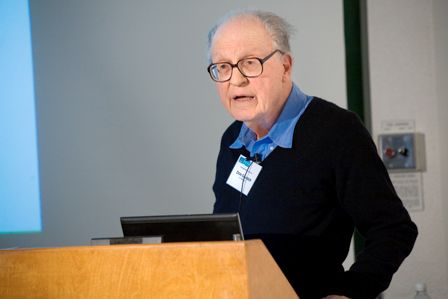
(Courtesy: Lawrence Berkeley National Laboratory)
By Michael Banks
The US physicist Don Glaser has died at the age of 86. Glaser was instrumental in inventing the bubble chamber – a vessel filled with a superheated transparent liquid such as liquid hydrogen that can be used to detect electrically charged particles moving through it. He was awarded the Nobel Prize for Physics for this work in 1960, aged just 34.
Glaser was born in Cleveland, Ohio, on 21 September 1926. He received a BSc in physics and mathematics in 1946 from the Case Institute of Technology in Cleveland (the institute merged with others to create the Case Western Reserve University in 1967). He completed his PhD in 1949 at the same institute working on energy spectrum of high-energy cosmic rays and mesons.
In that same year Glaser moved to the University of Michigan, becoming a professor of physics in 1957. It was during his time at Michigan that he began to construct a number of diffusion cloud chambers and he invented the bubble chamber.
Work with the bubble chambers gave information on the lifetimes and decay modes of a range of particles such as the K° meson. In more recent times the use of bubble chambers has led to the discovery of weak neutral currents – one of the ways in which subatomic particles can interact through the weak force – that paved the way to the discovery of the W and Z bosons in 1983.
In 1959 Glaser went to the University of California, Berkeley and began to work in the relatively new field of molecular biology, particularly on the genetics of molecules such as DNA and RNA. He and his students showed that certain mutations in cultivated Chinese hamster ovary cells caused abnormal sensitivity to ultraviolet light that could convert these mutated cells into cancer cells. The seven genes involved in this process are also found in humans.
In 1971 Glaser co-founded Cetus Corporation – one of the very first biotechnology companies – to use the increasing knowledge of DNA to solve problems in agriculture and medicine. In 1991 the company was bought by the US biotechnology firm Chiron.
Music was one of Glaser’s passions. Indeed, he played in a symphony orchestra aged just 16. Glaser also enjoyed many outdoor pursuits such as mountaineering, skiing and sailing.



